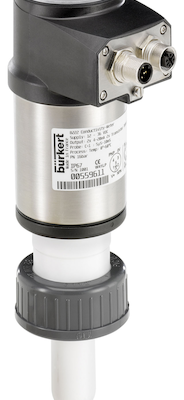
What are the Types of Flow Measurement?
Flow measurement is critical in processing plants that use liquid or gas in a way that needs to be accurate and timely. Flow measurement enables you to work efficiently at optimum output rates while also meeting regulatory and safety requirements. The types of flow measurement available to manufacturers used to be reasonably crude, but with the advancements in recent years in measurement technology, thanks in part to advanced electronics, wireless communications, and big data offering insights into real-time performance, they are more widely available and affordable. In this blog, we will be taking a look at some of the types of flow measurement techniques available and their likely applications.
Types of flow measuring instruments
Now that we understand the process of how flow measurement works, let’s take a look at the different types of flow measuring instruments and how they create different types of flow measurement.
Differential pressure flow measurement
This type of flow measurement device works by creating a pressure differential within the flow by restricting the cross-sectional area within the pipework. The change in pressure is proportional to a change in the velocity of the flow. This process can then be measured to calculate the flow rate.
Most commonly found in oil and gas industries, refineries, and chemical processing plants, this type of flow measurement is ideal for applications where no moving parts are needed but an immediate response is critical.
Positive displacement flow measurement
These flow metres measure the volume of flow moving through a pipe. They do this by using a rotating device within a housing that traps the fluid as it passes through; the flow of liquid causes the rotation and therefore allows for direct flow measurement. This type of flow measuring instrument can be used for viscous liquids, but they are often found in clean water applications where there is no straight pipework available and where alternatives such as paddle wheels would create too much disturbance of the flow. Positive displacement flow metres are generally very accurate and cause minimal pressure drops, so they are one of the most popular solutions.
Velocity flow measurement
Velocity flow metres come in many different forms and measure velocity rather than volume. One of the more popular options is the magnetic flow metre, which uses Faraday’s law of electromagnetic induction as the basis for flow measurement. To do this, it uses the fact that when a conductor (in this case, a conductive liquid such as water) moves through a magnetic field, a voltage is induced, and that voltage can be measured. Magnetic flow metres are ideal for corrosive liquids and slurries, such as wastewater.
Surface Acoustic Wave flow measurement
Our final type of flow measuring instrument is the surface acoustic wave. Acoustic wave technology can be applied to flow measurement to measure the volumetric flow of a liquid. Similar to the technology used in seismic measurement, surface acoustic wave flow metres use transducers on the outside of the pipework to act as transmitters and receivers to measure the propagation of an acoustic wave and capture data on amplitude, frequency, and run times. This technology is used widely in hygienic processing, such as pharmaceutical plants, because not only is the data extremely accurate, but there is no interference needed with the flow at all. This means that no drop in pressure is experienced and, crucially, no contamination of the liquid or of the flow measurement device can occur.
Final thoughts – the types of flow measurement
Hopefully, you now understand all the many types of flow measurement. If you would like to understand which types of flow measurement device are right for your application or would like to learn more about the FLOWave flow metre, contact us, and we will be happy to support you in finding the right flow measurement solution for you.



